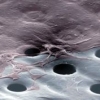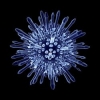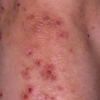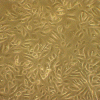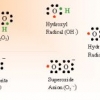Il diidroavenantramide D previene la generazione delle specie reattive dell'ossigeno da parte delle radiazioni UV e l'espressione delle metalloproteinasi di matrice 1 e 3 nei fibroblasti dermici umani
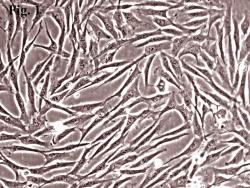 La radiazione ultravioletta B (UVB) provoca il foto-invecchiamento sopraesprimendo le metalloproteinasi della matrice (MMPs) nelle cellule cutanee umane.
La radiazione ultravioletta B (UVB) provoca il foto-invecchiamento sopraesprimendo le metalloproteinasi della matrice (MMPs) nelle cellule cutanee umane.
Il diidroavenantramide D (DHAvD) è un analogo sintetico dell'avenantramide, il componente attivo nei fiocchi d'avena. Anche se sono stati riportati più volte gli effetti anti-infiammatori, anti-aterosclerotici e antiossidante del DHAvD, rimangono ancora poco chiari i suoi effetti sul foto-invecchiamento.
Abbiamo indagato gli effetti inibitori del DHAvD sulla produzione di specie reattive dell'ossigeno (ROS) e sull'espressione delle MMPs indotte dai raggi UVB e abbiamo anche chiarito il meccanismo molecolare di DHAvD nei fibroblasti dermici umani sottoposti ad UVB. Il western blot e le analisi con real-time PCR hanno rivelato che il DHAvD inibisce l'espressione delle MMP-1 e MMP-3 indotte dagli UVB, inoltre blocca significativamente la produzione di ROS (indotta dagli UVB) nei fibroblasti. Va aggiunto che il DHAvD ha attenuato la fosforilazione delle MAPKs indotta dagli UVB e ha ridotto l'attivazione di NF-kB e AP-1. Pertanto, sembra proprio che DHAvD regoli l'espressione delle MMP inibendo l'attivazione di MAPK/NF-kB e AP-1 mediata dai ROS. Quindi, DHAvD potrebbe essere un candidato utile a prevenire il foto-invecchiamento cutaneo indotto dalla luce ultravioletta.
Storia della pubblicazione:
Titolo: Dihydroavenanthramide D prevents UV-irradiated generation of Reactive Oxygen species and expression of matrix metalloproteinase-1 and -3 in human dermal fibroblasts
Rivista: Experimental Dermatology. doi: 10.1111/exd.12243
Autori: Jeong-Mi Kim, Eun-Mi Noh, Kang-Beom Kwon, Bo-Mi Hwang, Jin-Ki Hwang, Yong-Ouk You, Min Seuk Kim, Wan Lee, Jeong-Ho Lee, Hye-Jung Kim, Jong-Suk Kim, Young-Rae Lee
Affiliazioni:Department of Biochemistry, Institute of Medical Science, Chonbuk National University Medical School, Jeonju, South Korea Center for Metabolic Function Regulation, Wonkwang University School of Medicine, Iksan, South Korea Laboratory of Oral Physiology, School of Dentistry, Wonkwang University, Iksan, South Korea Department of Oral & Macillofacial Radiology, School of Dentistry, Wonkwang University, Iksan, South Korea Department of Herbal Medicine Resources, College of Environmental and Bioresource Sciences, Chonbuk National University, Iksan, Korea Department of Family Medicine, The Catholic University of Korea, Incheon St. Mary's Hospital, Incheon, South Korea Department of Oral Biochemistry, School of Dentistry, Wonkwang University and Institute of Wonkwang Dental Research, Iksan, South Korea
Abstract:
Ultraviolet B (UVB) radiation induces photoaging by upregulating the expression of matrix metalloproteinases (MMPs) in human skin cells. Dihydroavenanthramide D (DHAvD) is a synthetic analog to naturally occurring avenanthramide, which is the active component in oats. Although anti-inflammatory, anti-atherosclerotic, and antioxidant effects have been reported, the anti-photoaging effects of DHAvD are yet to be understood. In this study, we investigated the inhibitory effects of DHAvD on UVB-induced production of reactive oxygen species (ROS) and expression of MMPs, and its molecular mechanism in UVB-irradiated human dermal fibroblasts. Western blot and real-time PCR analyses revealed that DHAvD inhibited UVB-induced MMP-1 and MMP-3 expression. It also significantly blocked UVB-induced ROS generation in fibroblasts. Additionally, DHAvD attenuated UVB-induced phosphorylation of MAPKs, activation of NF-κB and AP-1. DHAvD regulates UVB-irradiated MMP expression by inhibiting ROS mediated MAPK/NF-κB and AP-1 activation. DHAvD may be a useful candidate for preventing UV light-induced skin photoageing

